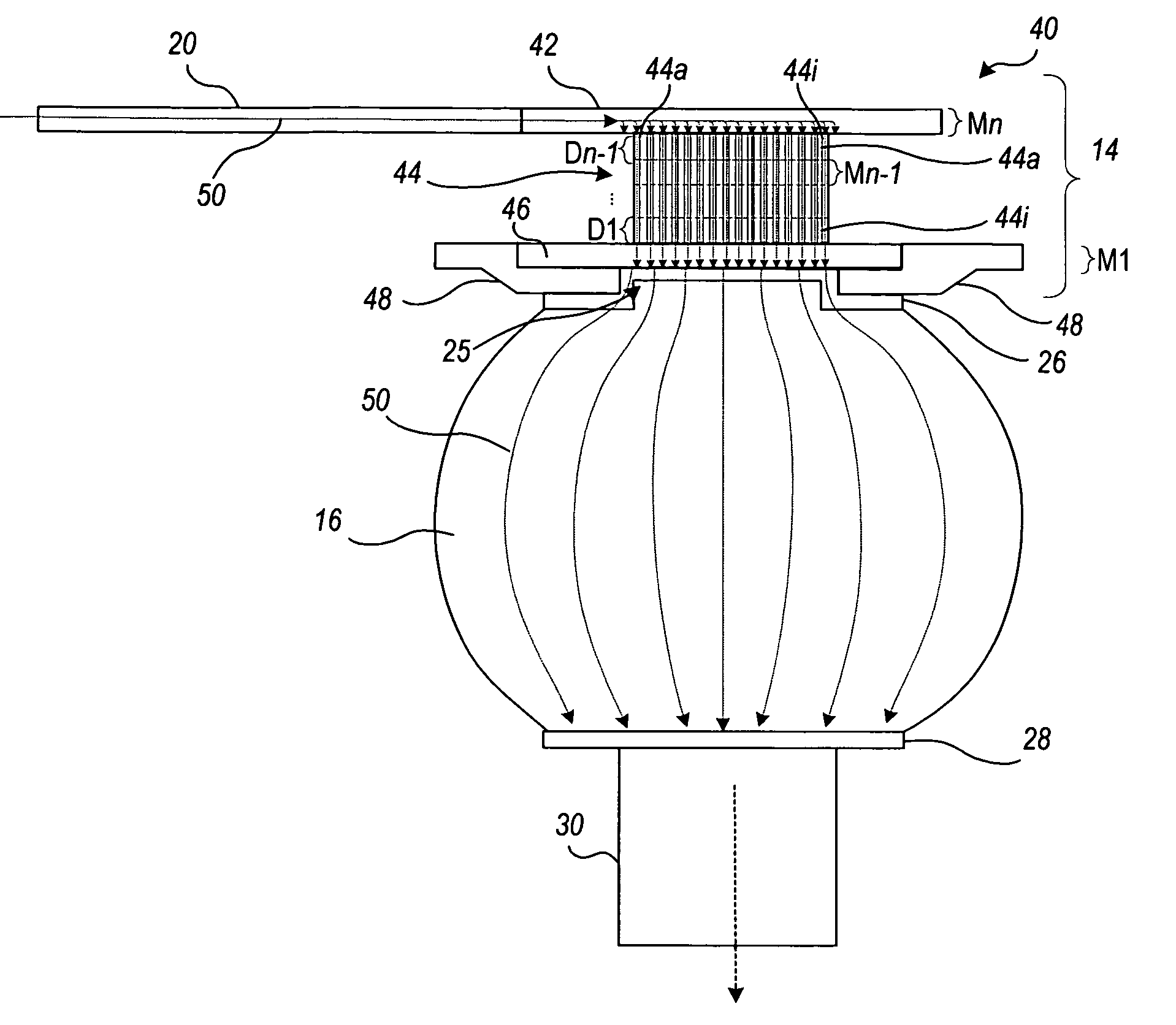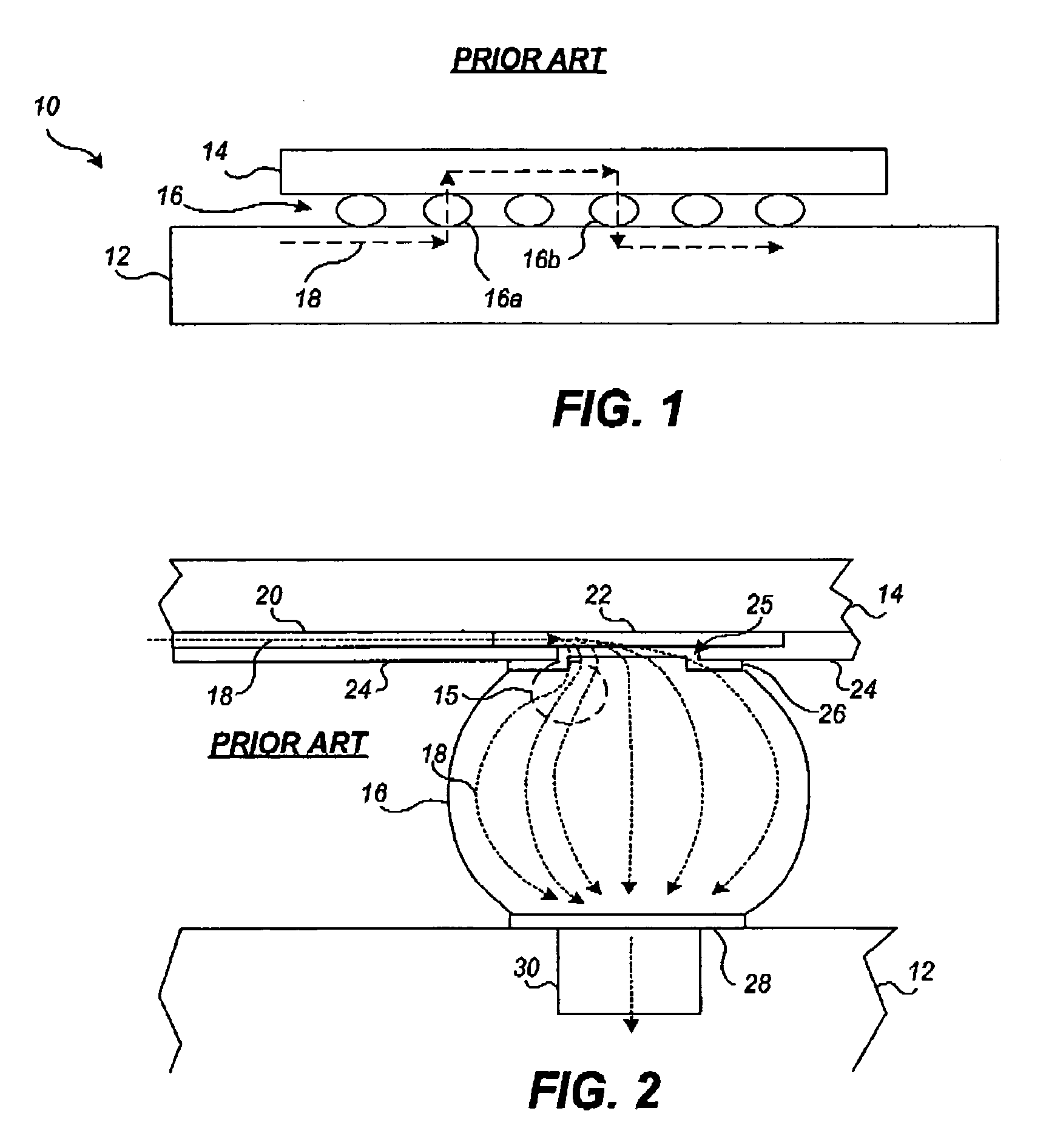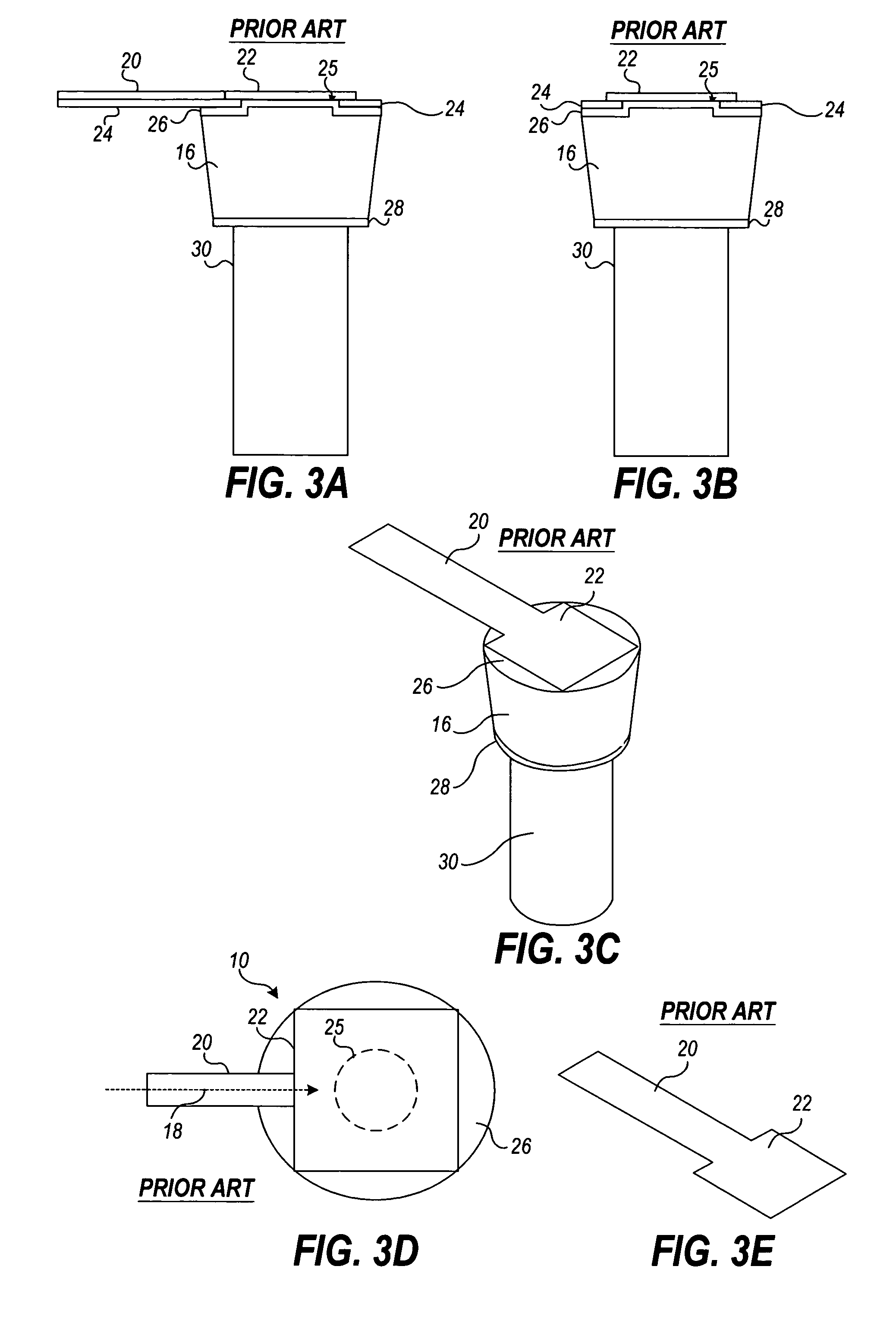Routing design to minimize electromigration damage to solder bumps
a technology of flip chip and bump, which is applied in the direction of semiconductor devices, electrical equipment, and semiconductor/solid-state device details, etc., can solve the problems of high current density in the bump, loss of continuity, and failures that are premature, so as to reduce current crowding, reduce the damage of the solder bump, and reduce the effect of current density
- Summary
- Abstract
- Description
- Claims
- Application Information
AI Technical Summary
Benefits of technology
Problems solved by technology
Method used
Image
Examples
Embodiment Construction
[0028]A novel design for integrated circuit component pads is described in detail below that seeks to achieve a reasonably uniform current distribution on the outer pad interface to assist in reducing electromigration damage in a joint (e.g., flip-chip bump) connected to the pad. For purposes of comparison, the configuration of a traditional prior art solder bump in a flip-chip assembly is shown in FIGS. 3A, 3B, 3C, 3D, and 3E. More particularly, FIG. 3A is a cross-sectional side view, FIG. 3B is a cross-sectional front view, FIG. 3C is an isometric view, and FIG. 3D is a top plan view of the components included in a single bump junction of the flip-chip assembly 10 of FIG. 1. FIG. 3E is a perspective view of the trace 20 and pad 22 of FIGS. 3A–3D. As illustrated in FIGS. 3A, 3B, 3C, and 3D, the trace 20 is conductively connected to the pad 22 on the outermost trace layer of the integrated circuit 14 (of FIG. 1). The pad 22 is capped with a passivation layer 24, typically comprising...
PUM
 Login to View More
Login to View More Abstract
Description
Claims
Application Information
 Login to View More
Login to View More - R&D
- Intellectual Property
- Life Sciences
- Materials
- Tech Scout
- Unparalleled Data Quality
- Higher Quality Content
- 60% Fewer Hallucinations
Browse by: Latest US Patents, China's latest patents, Technical Efficacy Thesaurus, Application Domain, Technology Topic, Popular Technical Reports.
© 2025 PatSnap. All rights reserved.Legal|Privacy policy|Modern Slavery Act Transparency Statement|Sitemap|About US| Contact US: help@patsnap.com



